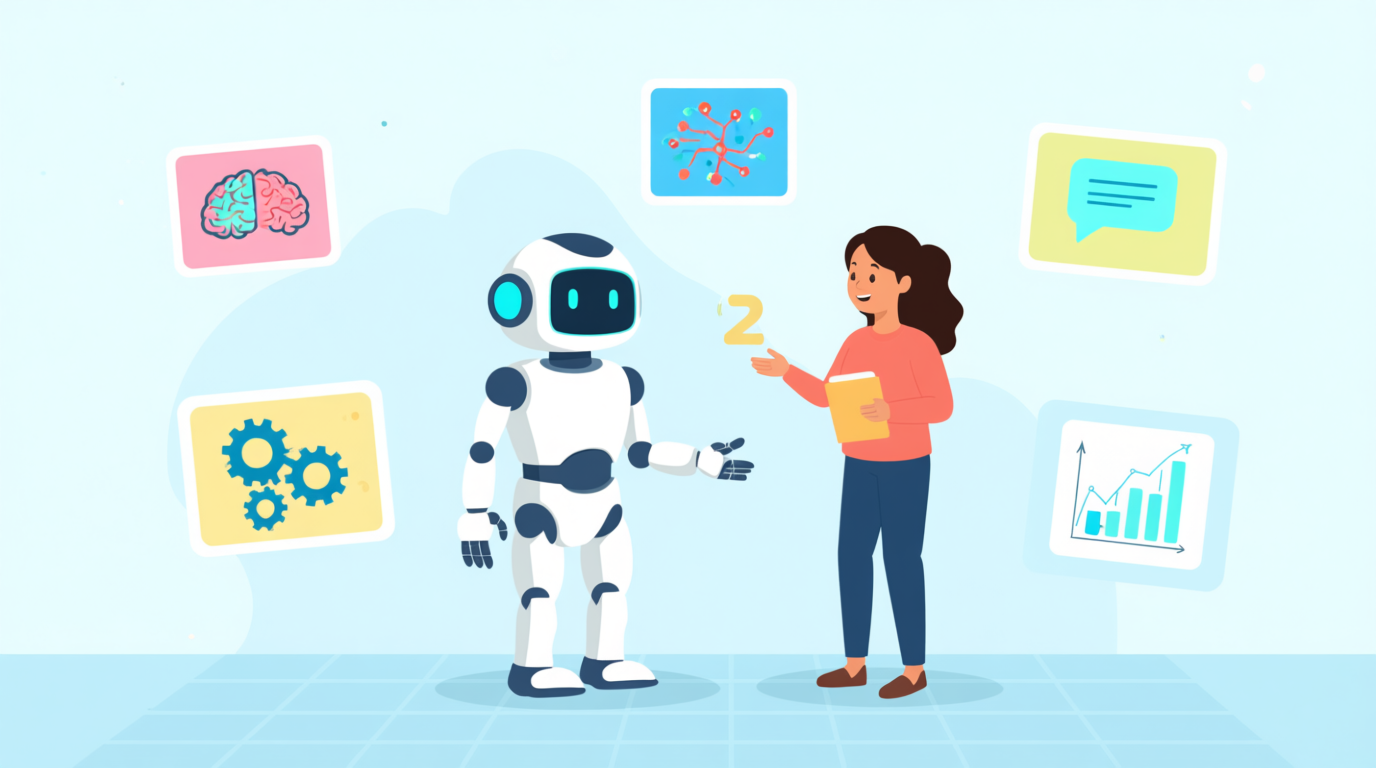Artificial Intelligence (AI) is the technology that is rapidly reshaping our world, but for many, it remains a complex and confusing concept. Forget the science fiction; at its core, Artificial Intelligence is simply the field of computer science dedicated to creating systems that can mimic human intelligence to perform tasks.
In plain English, AI is about building smart machines that can learn, reason, perceive, and act to solve problems or achieve goals.
The Core Concept: How AI Works?
The foundation of modern AI isn't about programming a computer with a set of rules for every possible scenario. Instead, it’s about giving the machine the ability to learn from vast amounts of data. This learning process is what allows AI systems to adapt and become smarter over time.
The Building Blocks: Machine Learning (ML)
Machine Learning (ML) is the most common way we achieve AI today. Think of it as the engine of AI.
ML is a method that teaches computers to learn from data without being explicitly programmed. Instead of a developer writing code for every possible outcome, the developer feeds the system data, and the machine identifies patterns and makes predictions based on those patterns.
For example, if you want an AI to distinguish between a picture of a cat and a picture of a dog, you don't write code for "a cat has pointy ears and a tail." You simply feed the ML model thousands of labeled pictures of cats and dogs. The model then learns the features that differentiate them on its own.
The Advanced Technique: Deep Learning (DL)
Deep Learning (DL) is a specialized subset of Machine Learning. It's responsible for the most impressive AI breakthroughs we've seen recently, like facial recognition and generative AI.
DL uses artificial Neural Networks—structures modeled after the human brain—with multiple layers (hence "deep"). These deep networks allow the AI to process complex, unstructured data like images, sound, and natural language.
DL powers the most advanced language models (like ChatGPT and Gemini) because its deep layers can understand the subtle context, grammar, and meaning behind human language, not just simple keywords.
Three Main Types of AI
AI systems are typically categorized based on their functional capabilities.
Artificial Narrow Intelligence (ANI) is AI designed and trained to perform a single, specific task. This is all the AI we currently have. Examples include voice assistants like Siri and Alexa, spam filters, and weather forecasting.
Artificial General Intelligence (AGI) is a hypothetical AI with the ability to understand, learn, and apply its intelligence to solve any problem, just like a human. This level of AI does not currently exist.
Artificial Superintelligence (ASI) is also hypothetical. It would surpass human intelligence and capability in virtually every field, including creativity and problem-solving.
AI in Your Everyday Life: Practical Examples
AI is not future tech—it's already everywhere.
Digital assistants like Siri and Google Assistant use Natural Language Processing (a form of ML) to understand your spoken commands and respond. In e-commerce, Recommendation Engines analyze your purchase history and browsing behavior to suggest products you are likely to buy next. Social media uses Facial Recognition to tag friends in photos, and AI algorithms decide which posts appear in your feed. In healthcare, Diagnostic Tools analyze X-rays and MRIs to detect diseases like cancer with high accuracy.
The most exciting recent development is Generative AI. These tools create new, original content like text, images (like those created by DALL-E), and music based on a simple text prompt. Unlike older AI that simply classified data, Generative AI can create code, design logos, and hold complex, human-like conversations. This field is rapidly maturing and is driving massive changes across creative industries, customer service, and scientific research.
In short, AI is the technology driving smart automation and creative breakthroughs. By mastering the core concepts of Machine Learning and Deep Learning, you've taken the first step toward understanding the most important technological force of our time.
FAQs
1. What is the difference between AI, Machine Learning, and Deep Learning?
Think of it as nesting dolls: Artificial Intelligence (AI) is the overarching goal of creating intelligent machines. Machine Learning (ML) is a method for achieving AI by learning from data. Deep Learning (DL) is a specific technique within ML that uses deep neural networks.
2. How do AI systems "learn" exactly?
AI systems learn through training. Developers feed the model vast datasets (e.g., millions of medical records or images). The model processes this data, finds statistical relationships and patterns, and adjusts its internal algorithms to make more accurate predictions or decisions in the future, much like a student studying practice problems.
3. What is Natural Language Processing (NLP)?
NLP is a branch of AI that gives machines the ability to read, understand, and generate human languages. It’s the technology that powers translation services, customer service chatbots, and voice assistants.
4. Is Generative AI going to replace human jobs?
Generative AI is not expected to completely replace most jobs, but it will certainly change them. It excels at automating repetitive, draft-creation, or informational tasks. This means that human workers will be increasingly focused on higher-value activities that require human judgment, complex problem-solving, emotional intelligence, and strategic oversight.
5. What is a "Neural Network"?
A Neural Network is a computer system designed to simulate the way the human brain analyzes and processes information. It consists of layers of interconnected "nodes" (neurons) that receive data, process it, and pass the results to the next layer. The "deep" networks in Deep Learning have many of these layers, allowing them to tackle highly complex problems.
